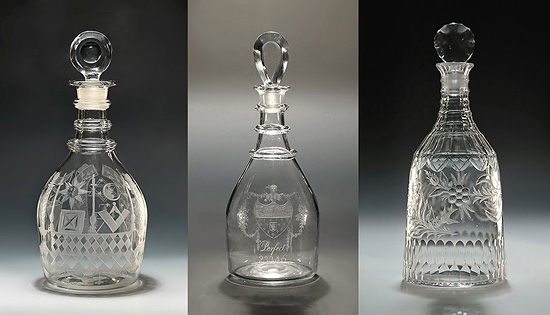|
M. FORD CREECH ANTIQUES & FINE ARTS
LATE MING DYNASTY "FIGURAL" KRAAK CHARGER
Jingdezhen, China, c1635-50 / Rinaldi, Border IX, with "Dutch Flowers"
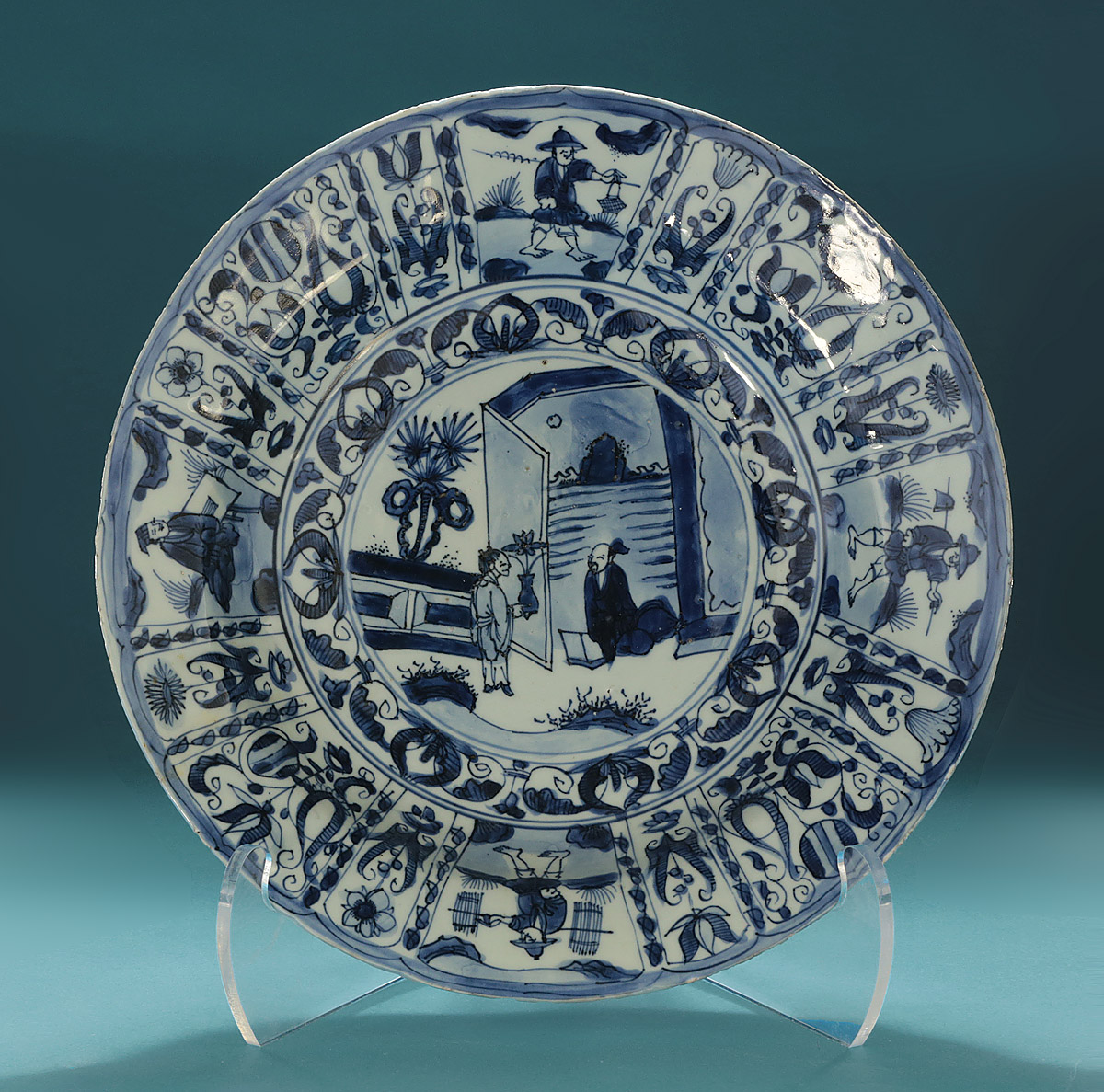
|
|
The large dish painted in vibrant blues, centering figures on a garden terrace,
an attendant presenting a vase with flower (lotus?) to a scholar,
and surrounded by Iznik style flowers (tulips and carnations) -
so called "Dutch Flowers" (See "Dutch Flowers" below),
the roundel border of floral scrolls, the outer border with eight large panels :
four with Iznik style flowers, and four with figures :
one of a seated scholar, three carrying fish and various goods;
separated by 8 narrow panels of further Iznik (Dutch) flora and small scrolls;
the underside with 8 panels, the larger panels with medallions centering possible combinations of
three friends (prunus, pine and bamboo), which are painted in the smaller panels;
the verso with a printed paper label : "Lurie Collection"*
Ref : See Rinaldi, "Kraak Porcelain", p. 112-116 for a discussion of Border IX,
and a similar example with figural center, p. 112.
Condition : Normal Kraak rim fritting, small nicks, and glaze skips;
3 tight hairlines verso that do not go through to the upper surface
12-5/8" Diameter / 2.25" High
SOLD
#8084
Please Inquire
|
|
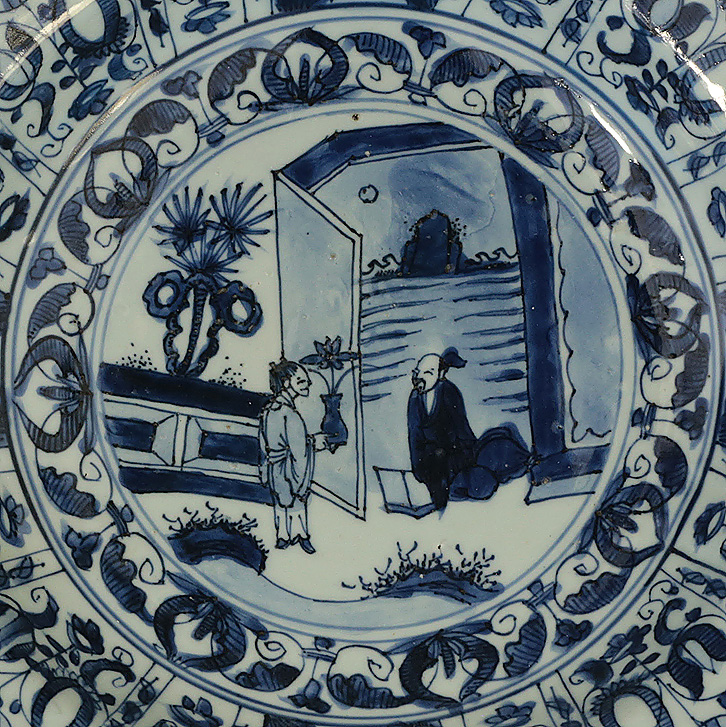
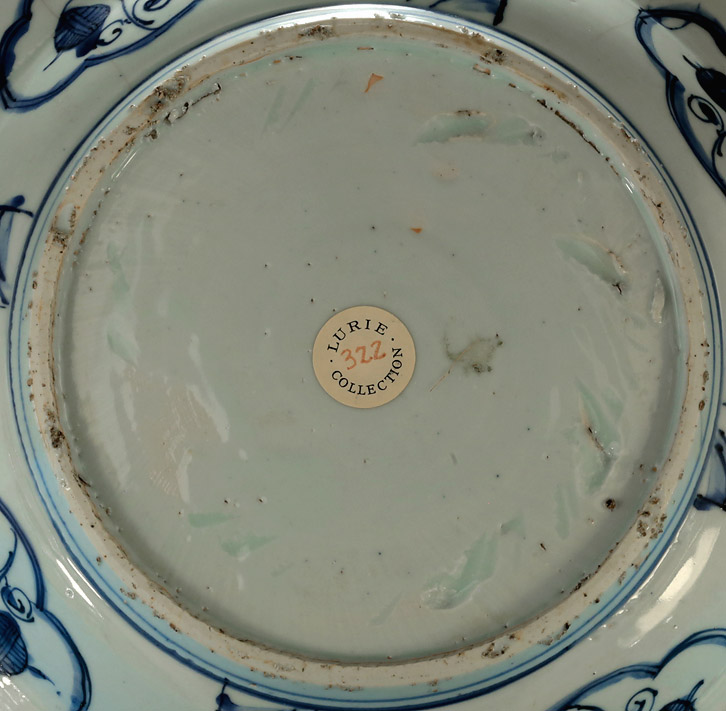
| |
"DUTCH FLOWERS"
The so-called "Dutch Flowers", stylized flowers appearing as "tulips and carnations"
relates to flowers painted on the Iznik wares of the mid-16th century.
Iznik (ancient Nicea, about 16 miles southeast of Istanbul)
had been well known for the most beautiful wares and tiles of the Ottoman period.
Their tiles, as shown below, typically included stylized tulips, carnations and lotus.
quite similar to those depicted on this Ming Kraak porcelain, made for the West.
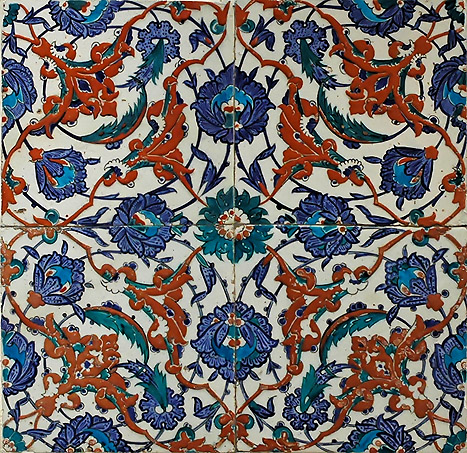
Above : An Iznik tile panel with flowers, Fritware (stonepaste), transparent glaze,
painted underglaze on slip. Turkey : Iznik, second half of the 16th century,
Louvre Museum, Paris
Tulips are natives of Turkey. In the last quarter of the 16th century
tulips were introduced into Holland.
By the 1630's, tulips had become a tremendous craze,
with people willing to pay exorbitant prices for them –
even causing the world's first financial bubble.
It is also about that time that the stylized tulip and carnation
appeared on Delft and well as Chinese porcelains
A c1635 V.O.C. record has been found requesting a design to be copied.
The Dutch had not previously interfered with the choice of decoration.
It is almost certain that the design requested contained the Iznik (or Dutch) flowers.
Further, a 1639 V.O.C. document from Batavia to Formosa instructed the Dutch merchants
in Formosa to buy wares painted with "Dutch Flowers" :
which included stylized tulips, carnations and other flora.
At this time on Kraak porcelain, flower scrolls began to replace diapering.
Depicting "distance" began to reflect Western methods of perspective,
the illusion implied by proportionately smaller sizes as objects moved back in space.
Also the figures became more active – working, carrying things,
and actively visiting rather than still and contemplating-
all present in this example.
*"LURIE COLLECTION"
"The Lurie Collection is one of the most comprehensive and meticulously assembled
private collections of Chinese export porcelain from the late Ming dynasty (1368-1644)
made at Jingdezhen in Jiangxi province."
170 pieces of this collection were published in "Jingdezhen to the World :
The Lurie Collection of Chinese Export Porcelain from the Late Ming Dynasty",
Teresa Canepa. pub. 2019.
The publication "contains examples that are exceptional not only
for their aesthetic beauty and quality, but also for their rarity or historical importance.
This book makes a significant contribution to several fields of study,
most notable those related to the production, design and trade
of Jingdezhen export porcelain in the late 16th and early 17th centuries."
|
|
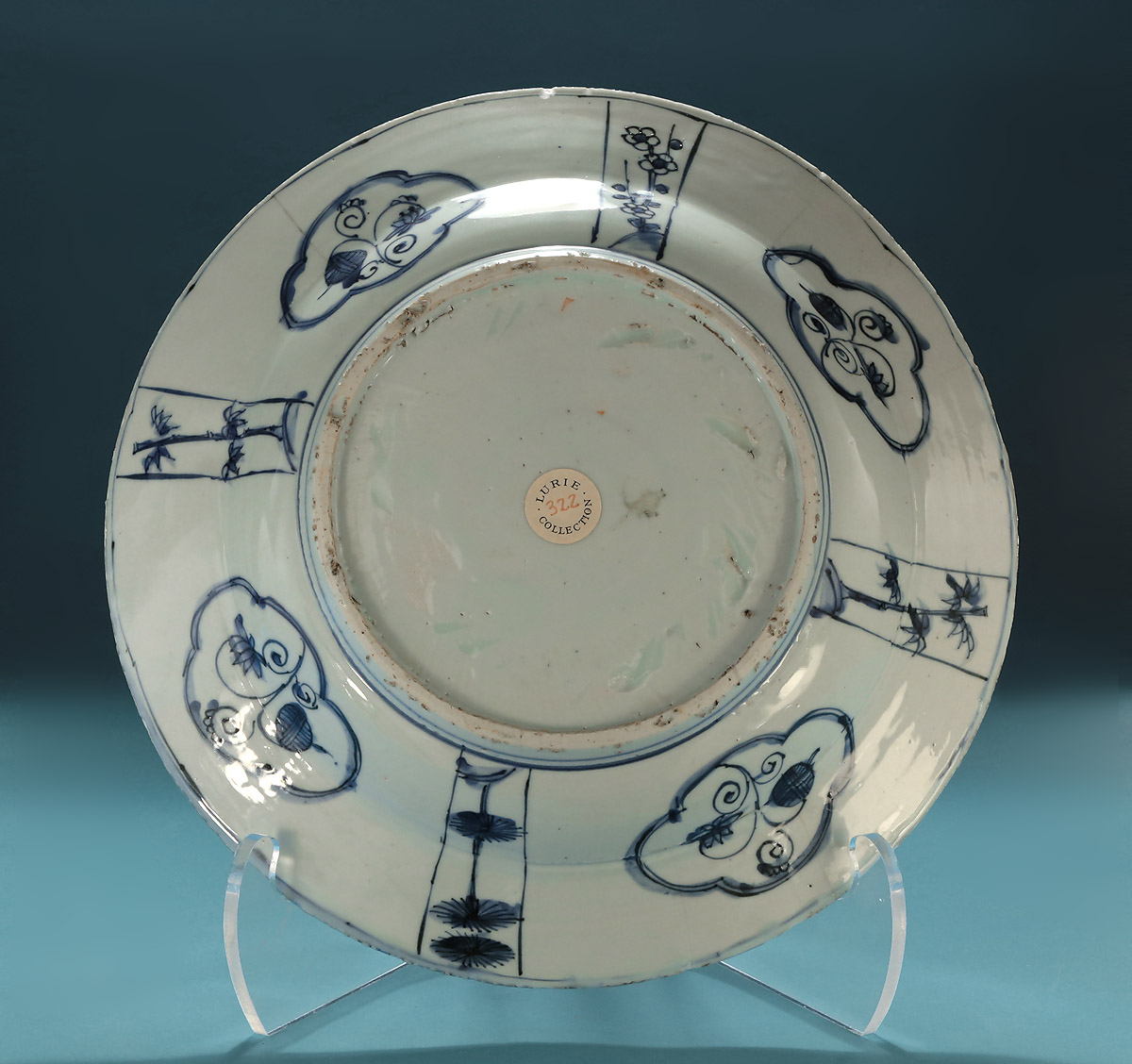
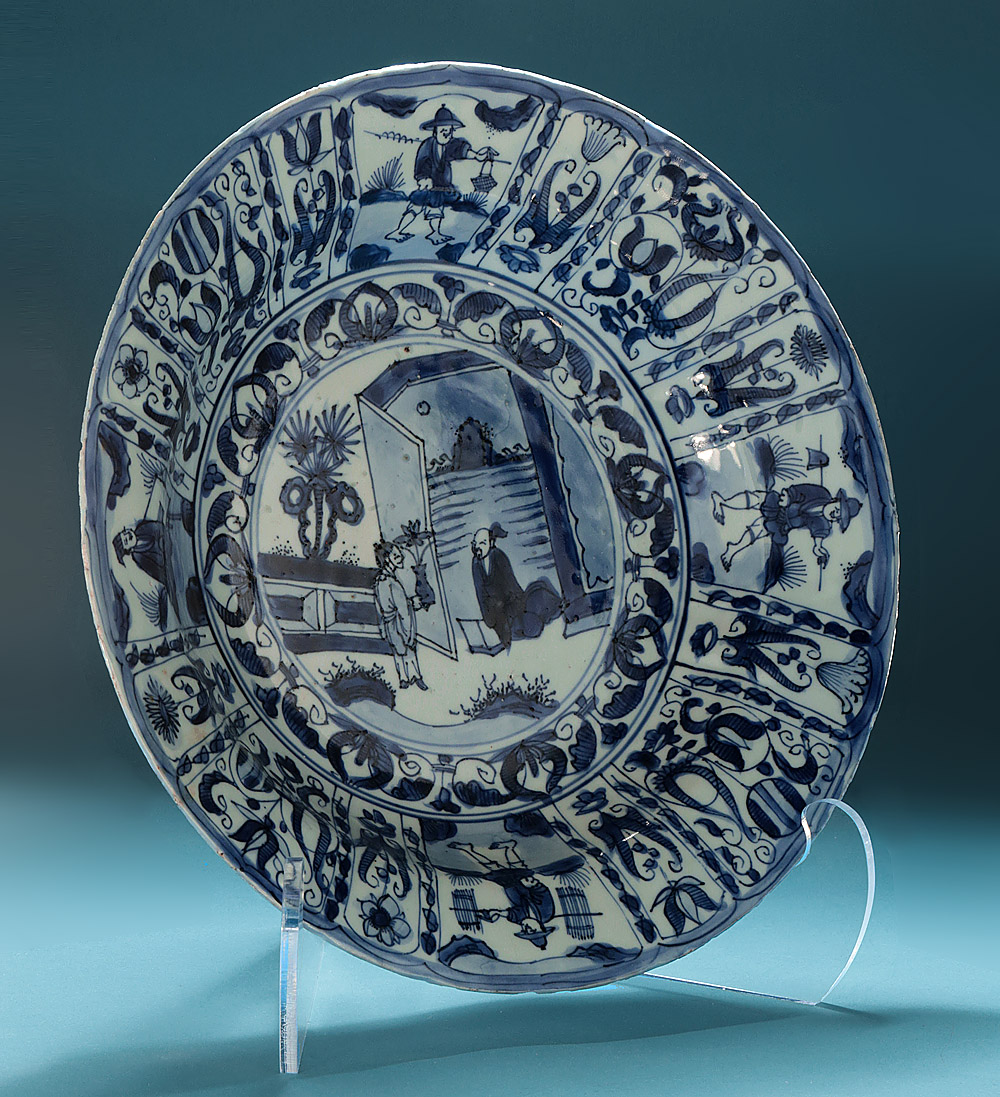
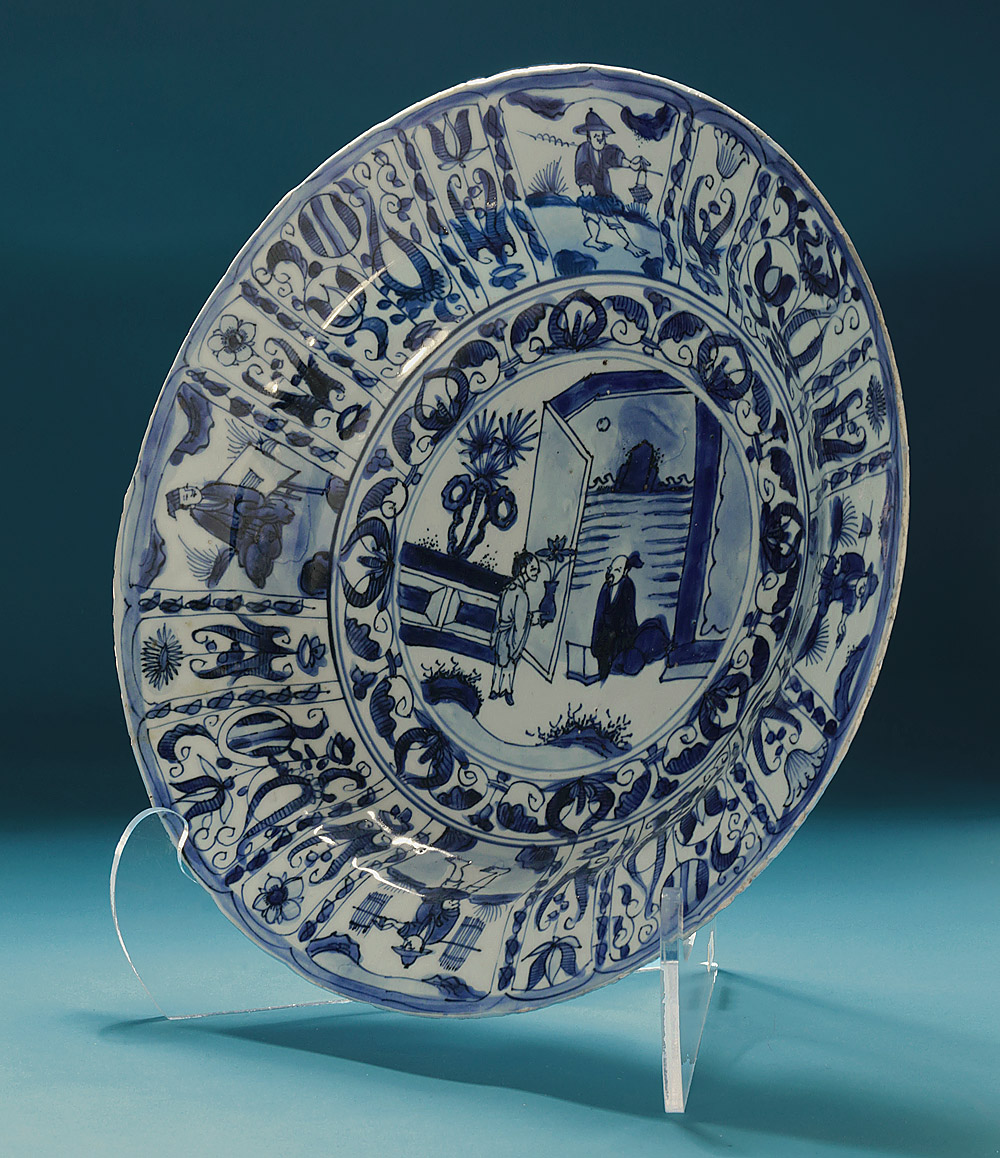
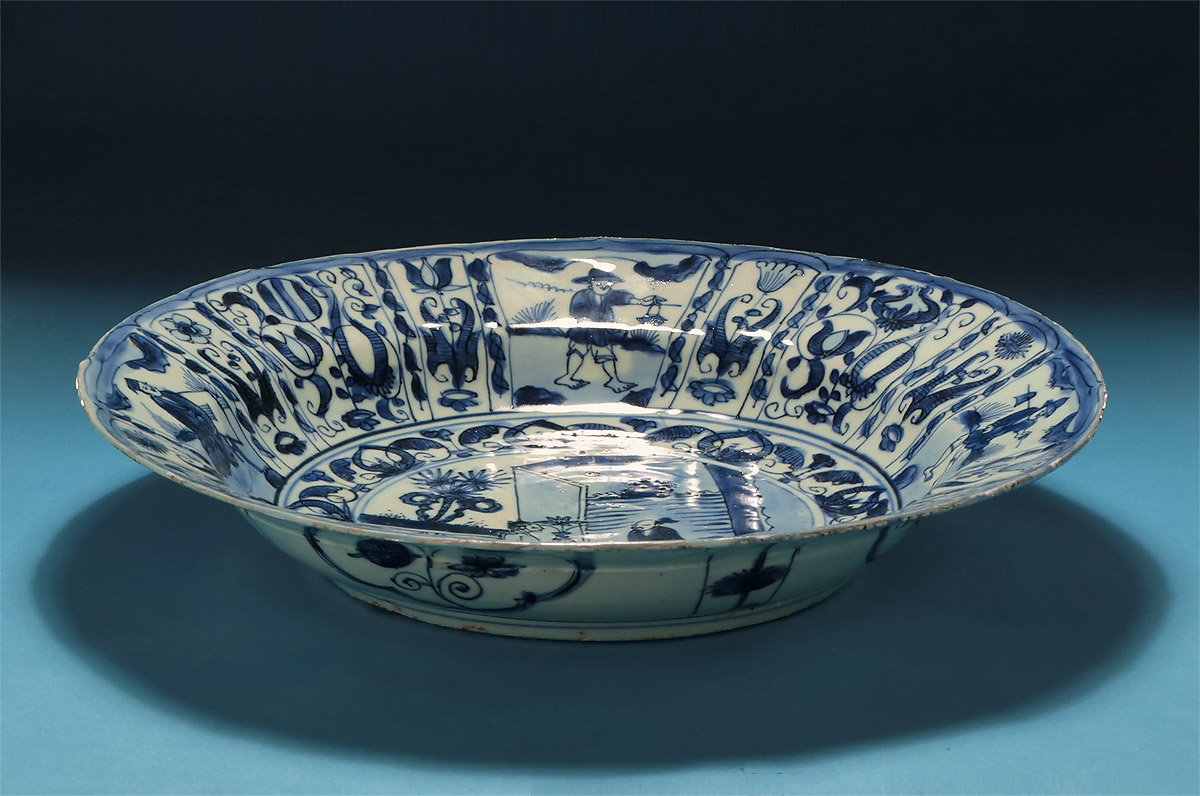
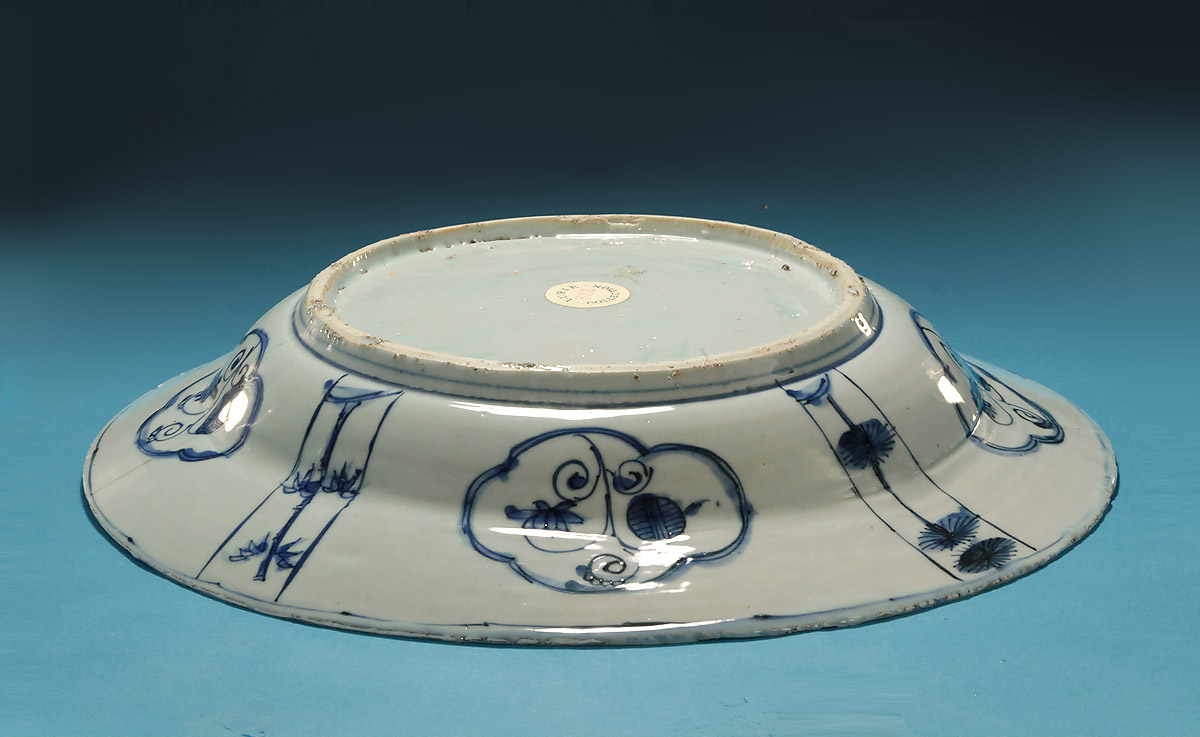
We welcome and encourage
all inquiries regarding our stock. We will make every attempt to answer any questions you might
have.
For
information, call (901) 761-1163 or (901) 827-4668,
or
Email : mfcreech@bellsouth.net or mfordcreech@gmail.com
American Express, Mastercard, Visa and Discover accepted

 
M. Ford Creech Antiques & Fine Arts / 581
South Perkins Road / Memphis,
TN 38117 / USA /
Wed.-Sat. 11-6, or by appointment
|
|
Accessories Ceramics
Early Asian Ceramics
Fine Art
Furniture
Glassware
Silver
Home
Late Ming Dynasty Figural Kraak Charger, Jingdezhen, China, c1635-50 / Rinaldi, Border IX, Dutch Flowers
© The images, concepts and text herein are subject to copyright.
Should you wish to reproduce any part of this site's content, simply request permission.
We also ask that any reproduction be attributed properly.
|
|
|









